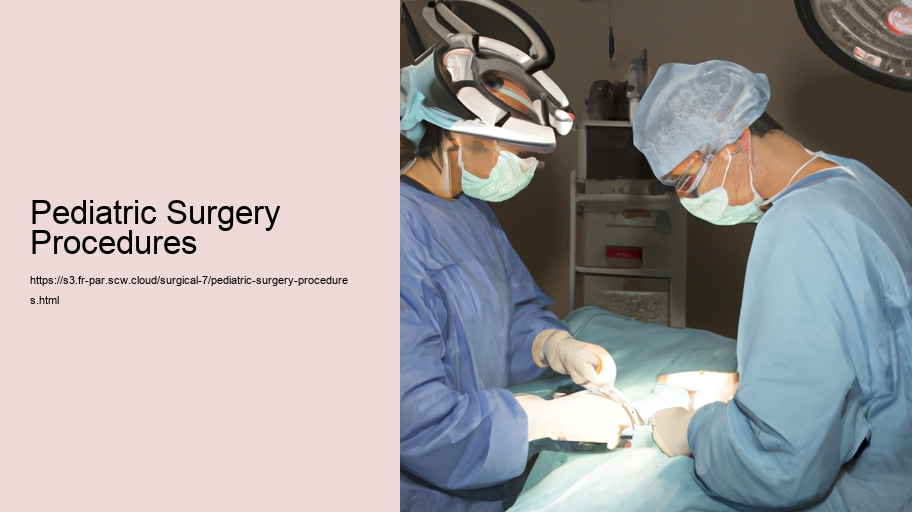Pediatric surgery procedures encompass a wide range of operations aimed at addressing the medical needs of infants, children, and adolescents. These procedures are designed to correct congenital anomalies, repair trauma-related injuries, and treat various diseases and disorders that can affect young patients. The field of pediatric surgery is a highly specialized area that not only requires surgical expertise but also a deep understanding of the unique physiological and psychological needs of children.
From the smallest of neonates to the nearly grown teenagers, pediatric surgeons are tasked with the delicate responsibility of operating on patients whose bodies are still developing. This means that the surgical techniques and equipment used must be tailored to the size and sensitivity of young patients.
Common pediatric surgery procedures can be categorized into different groups based on the nature or location of the condition being treated. For instance, procedures may involve the correction of congenital heart defects, such as the repair of a ventricular or atrial septal defect. These intricate operations require precision and a deep knowledge of the rapidly changing cardiac anatomy in children.
Another area of pediatric surgery includes gastroenterological procedures, such as the repair of hernias, which are more common in children due to the weakness of their abdominal walls. Pediatric surgeons also perform appendectomies to address appendicitis, a common emergency in children, which if left untreated, can become life-threatening.
Urological surgeries are also prevalent in the pediatric population. Procedures like the correction of undescended testes in boys or the treatment of vesicoureteral reflux, where urine flows backward from the bladder toward the kidneys, are examples of conditions that pediatric surgeons address. Such operations not only focus on immediate relief but also on preventing future complications that could affect growth and development.
Orthopedic surgeries in children deal with the musculoskeletal system. Procedures such as the correction of clubfoot, treatment of fractures, and the management of congenital hip dysplasia fall under this category. Pediatric orthopedic surgery requires a unique approach, as these procedures must account for the future growth of the child's bones and joints.
Neurosurgical procedures in children often involve the treatment of congenital anomalies of the brain and spinal cord, such as spina bifida or hydrocephalus. Pediatric neurosurgeons work to correct these conditions while minimizing the impact on the child's developing nervous system.
Beyond the physical intricacies of these procedures, pediatric surgeons must also navigate the emotional and psychological aspects of treating young patients. Children often have higher levels of anxiety and fear regarding medical interventions, and thus require a compassionate approach that makes them feel safe and secure. Effective communication with both the child and their family is key to ensuring a supportive environment and fostering cooperation throughout the surgical process.
Pediatric surgeons work closely with a multidisciplinary team that can include pediatric anesthesiologists, nurses, and other specialists to provide comprehensive care. Preoperative planning and postoperative care are equally important to ensure that the child receives the best possible outcome with minimal discomfort and a swift recovery.
In conclusion, pediatric surgery procedures are a testament to the incredible skill and dedication of the medical professionals who perform them. These operations are not merely smaller versions of adult surgeries; they are specialized interventions that take into account the unique challenges of treating a growing, developing human being. The ultimate goal of pediatric surgery is not just to correct immediate health issues but to give children the chance to live healthy, fulfilling lives well into adulthood.
